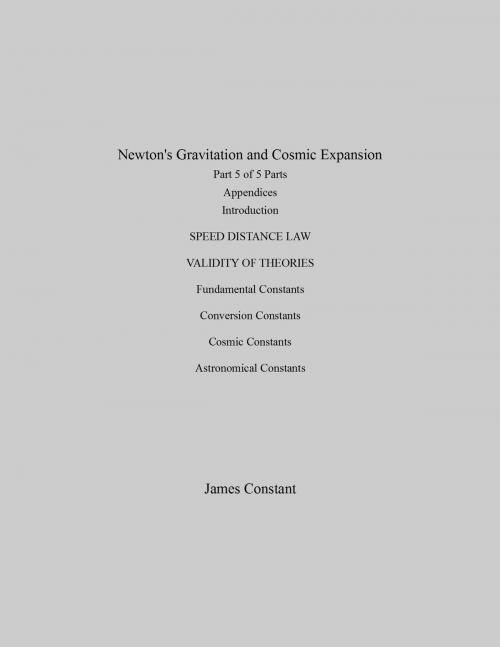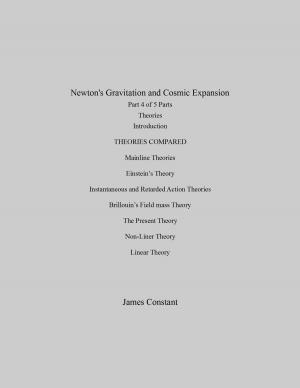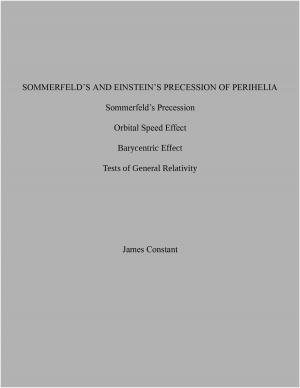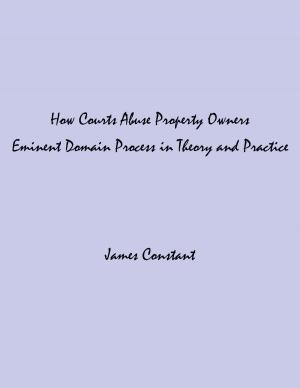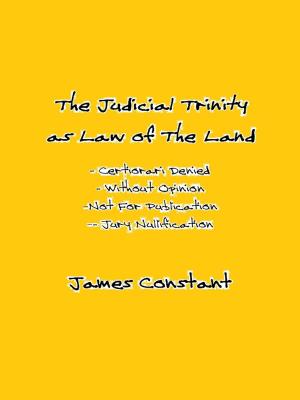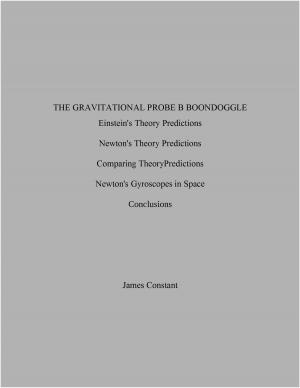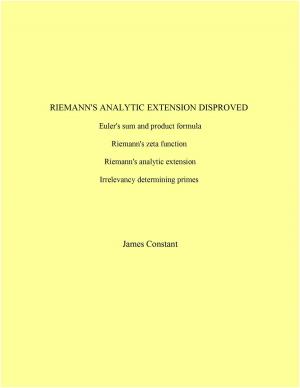Newton's Gravitation and Cosmic Expansion (V Appendices)
Nonfiction, Science & Nature, Science, Physics, Gravity| Author: | James Constant | ISBN: | 9781310383236 |
| Publisher: | James Constant | Publication: | October 26, 2014 |
| Imprint: | Smashwords Edition | Language: | English |
| Author: | James Constant |
| ISBN: | 9781310383236 |
| Publisher: | James Constant |
| Publication: | October 26, 2014 |
| Imprint: | Smashwords Edition |
| Language: | English |
This fifth part of a series provides a Distance vs Speed Table for purpose of illustrating the various types of universes I discuss in the first four Parts 1-4, and a Validity of Theories section in which I conclude that apparent galactic distances and speeds are much lower than actual distances and speeds. I provide tables of useful fundamental, conversion, cosmic and astronomical constants. In summary, the present theory is based on Newton’s theory of gravitation, Einstein’s special relativity, Hubble’s linear law, Brillouin’s field mass theory, and Planck’s black body theory. The universe contains three distinct regions: first, the Galactic universe which extends to an apparent distance of about 3.96 bly, the high end of Hubble’s linear law, second, the Radiation universe which overlaps the Galactic universe between apparent distances 1 bly and 3.96 bly and, third, the Extra Galactic universe beyond apparent distance 3.96 bly. The Galactic universe is described by Hubble's linear law observations and the Extra Galactic universe is described by Planck's black body spectrum. In view of Brillouin's negative field mass theory, metric theories describe the Galactic universe but are precluded in the Extra Galactic universe, including the present theory based on doppler and gravitational metrics and Einstein's theory based on Riemann's geometry of curved space. The ideas of space, distance, speed, mass do not exist in the Extra Galactic universe which is characterized solely in terms of energy, frequency and temperature.
This fifth part of a series provides a Distance vs Speed Table for purpose of illustrating the various types of universes I discuss in the first four Parts 1-4, and a Validity of Theories section in which I conclude that apparent galactic distances and speeds are much lower than actual distances and speeds. I provide tables of useful fundamental, conversion, cosmic and astronomical constants. In summary, the present theory is based on Newton’s theory of gravitation, Einstein’s special relativity, Hubble’s linear law, Brillouin’s field mass theory, and Planck’s black body theory. The universe contains three distinct regions: first, the Galactic universe which extends to an apparent distance of about 3.96 bly, the high end of Hubble’s linear law, second, the Radiation universe which overlaps the Galactic universe between apparent distances 1 bly and 3.96 bly and, third, the Extra Galactic universe beyond apparent distance 3.96 bly. The Galactic universe is described by Hubble's linear law observations and the Extra Galactic universe is described by Planck's black body spectrum. In view of Brillouin's negative field mass theory, metric theories describe the Galactic universe but are precluded in the Extra Galactic universe, including the present theory based on doppler and gravitational metrics and Einstein's theory based on Riemann's geometry of curved space. The ideas of space, distance, speed, mass do not exist in the Extra Galactic universe which is characterized solely in terms of energy, frequency and temperature.
